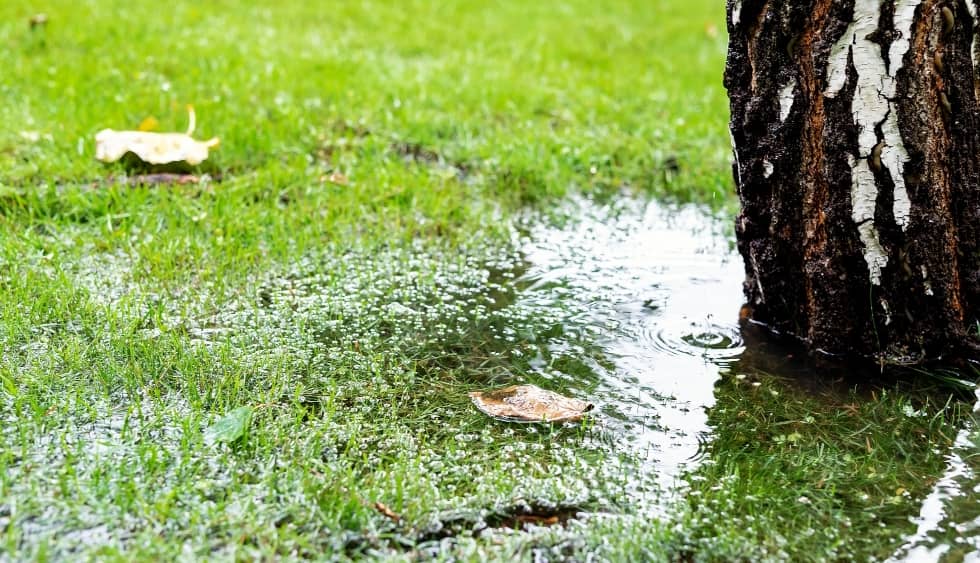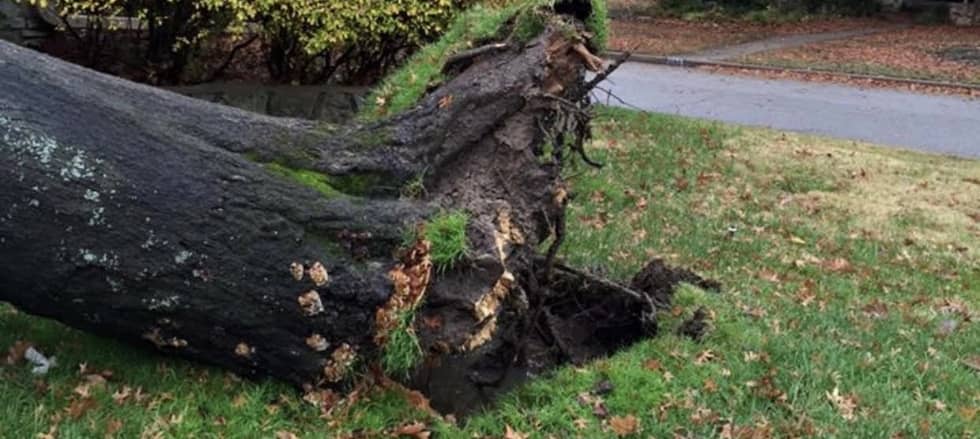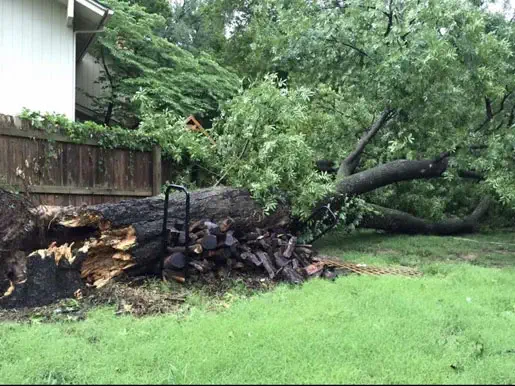
EFFECTS OF HEAVY RAIN ON TREES
It's not uncommon to see toppled trees in Tulsa, Oklahoma after a heavy rainfall. While rain can be a good thing for trees, too much of it can cause trouble. Unfortunately, no tree is immune to Mother Nature, and tree falling is always a risk during extreme weather conditions.
Why Do Trees Fall After Heavy Rain?
Trees fall after heavy rain because the saturated ground becomes soft, weakening the tree’s roots and causing them to lose their grip. Combined with strong winds, trees can easily topple when they have no solid anchor in the soil.
Heavy rain doesn’t just loosen the ground; it can also lead to long-term damage like root rot. When roots are submerged in water, they can’t access enough oxygen, causing them to weaken and decay. This makes trees more vulnerable to falling, especially during storms when the combination of wind and waterlogged soil creates a dangerous situation.
What Causes Root Rot In Trees?
Trees breathe through their roots, but heavy rainfall can create conditions where they can no longer do so effectively, leading to root rot and potential tree failure.
Here are some key factors that contribute to trees falling after heavy rain:
- Compacted Soil: When the soil is compacted, air space is reduced, causing tree roots to grow closer to the surface with less grip on the earth, increasing the risk of falling trees.
- Top-Heavy Trees: Trees with large, dense canopies are more likely to topple when the ground is saturated, as their weight can’t be supported by weakened roots.
- Restricted Growth: Trees growing in confined spaces, like between sidewalks or buildings, don’t have room for their roots to spread, leading to uneven weight distribution and instability.
- Vulnerable Tree Species: Certain tree species, such as the Bradford Pear, are especially prone to damage from extreme weather due to their multiple trunks and weak branch structures.
- Prolonged Saturation: Excess water filling soil pores deprives tree roots of oxygen, which can lead to root decay over time, weakening the tree’s overall structure.
With these factors in mind, even other trees that seem healthy may still be at risk during extreme weather conditions.
Heavy rain can lead to soil erosion, root exposure, and weakened tree structures, all of which pose safety hazards. Homeowners facing these challenges can benefit from prompt Tree Service Broken Arrow to assess and address water-related damage. Likewise, those in surrounding areas can rely on trusted Claremore Tree Services for preventive care and storm recovery solutions.

This tree had a fungus at the base that caused it to fall into a house during a period of heavy rain.
SIGNS
The most telltale sign that a tree is at risk for toppling over is cracked soil. When soil is saturated in excess, roots that anchor the tree can no longer hold and the soil will actually move and form cracks. Such oversaturation increases the risk that the roots will come lose or fail during high winds which often accompany heavy rainfall as the soil has turned into a soup-like consistency. Exposed roots may also be visible. Saturated soil and high wind are a recipe for toppling trees. This situation is an absolute emergency as the structure of the tree is highly compromised and could cause serious injury or damage if it were to fall. A qualified emergency tree service like TREES BY JAKE will be able to dispatch quickly with the right equipment to remove the hazard as soon as possible
Trees do not suddenly start learning on their own. Changes in the lean of a tree may indicate the serious problem of root failure and are also at risk for falling. Drenched soil and high winds can cause a tree to lean and disturbed soil around the base of the trunk likely is in an indication of an impending fall since the roots have lost their “grip.”
Heavy rainfall can create conditions ripe for fungal diseases. After a period of heavy rainfall, it is important to keep an eye out for root rot. Root rot occurs when an excess amount of water prevents the soil from draining properly and as a result, the roots do not receive enough oxygen and die. This disease can occur due to the excess amount of rainfall itself or there may fungus already present in the soil that was “activated” by the excess amount of rain. Signs of root rot include roots that are black in color and mushy or soft to the touch. The leaves may also become wilted or brown. A tree suffering from root rot will likely need to be removed, though in some cases, adequate water drainage may help. A Certified Arborist will be able to determine the best course of action.
Cavities, discolorations, or the presence of fungus at the base are other warning signs. Because heavy rain can deprive trees of oxygen and necessary functions, trees may be become stressed. Stressed trees are more susceptible to all sorts of ailments, including fungi and pests.
REDUCING THE RISKS
The risk of trees falling can never be fully eliminated, but regular maintenance can significantly reduce the chance of damage. Here are some important steps to keep your trees healthy and stable:

This tree had a weakened root system due to root rot and came toppling over during a rain/wind storm.
- Prune Regularly: Trim dead or declining tree limbs and reduce the canopy to minimize the impact of storms. A well-maintained canopy helps prevent tree falls during extreme weather.
- Improve Soil Conditions: Mulching and proper irrigation improve soil health, reducing the risk of root failure and making fallen trees less likely.
- Tree Cabling: Support weak or heavy branches with tree cabling to reinforce their stability, especially for trees prone to falling.
- Inspect by a Certified Arborist: Regular inspections from a Certified Arborist are essential. They can detect early signs of decay, disease, or structural weaknesses that could lead to fallen trees.
By following these proactive steps, you can maintain healthy trees and significantly reduce the risk of tree falling during storms.
CONTACT A TULSA CERTIFIED ARBORIST
Don’t wait until heavy rains cause damage to your property. Preventative maintenance is important when you live in a place like Tulsa, Oklahoma with lots of rain and other extreme weather. Contact Jake at TREES BY JAKE for a hazard evaluation by a Certified Arborist. If you have sustained tree damage due to weather, we offer 24/7 emergency tree services.
Call or text us at 918-500-9955 and don’t forget to check us out on Facebook, Instagram, and Twitter!
Contact Your
Tulsa Tree Service
TREES BY JAKE has been providing tree removal services in Tulsa for over a decade. Jake is a Tulsa Certified Arborist and we have a variety of equipment to safely and efficiently remove trees. Call or text us today for your free estimate at 918-500-9955 and don’t forget to check us out on Facebook, Instagram, and Twitter!